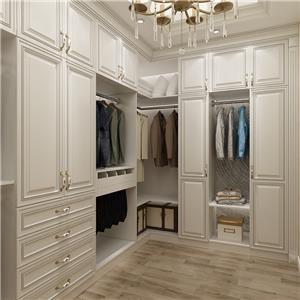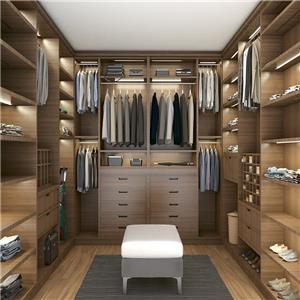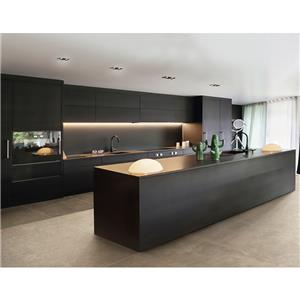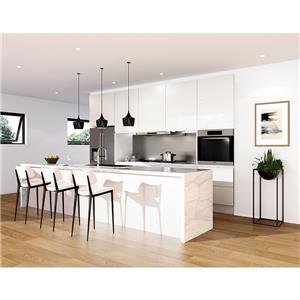Kitchen & Bathroom Cabinets: Frameless or Framed - Hanse
When it comes to kitchen and bathroom cabinets, there are two main types: frameless and framed. The way they are constructed is the main difference between framed and frameless cabinets. Framed cabinets have a support feature that sits on the cabinet structure to support the box, while frameless cabinets do not. Both have their own advantages and disadvantages, and the choice ultimately depends on personal preference and specific needs.
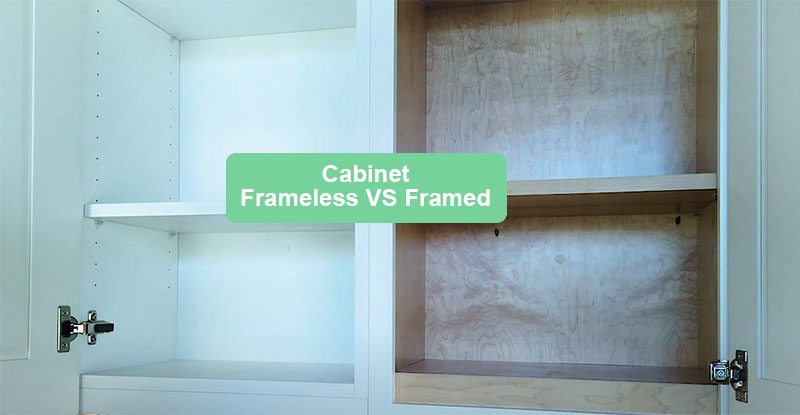
Frameless Cabinet
Frameless cabinets, also known as European-style cabinets, are constructed without a frame on the front of the cabinet box. Instead, the doors are attached directly to the sides of the cabinet box, providing more storage space and a modern, sleek look. Because there is no frame, the drawer and door fronts can be larger and offer easier access to the interior of the cabinet. This type of cabinet is ideal for a contemporary or minimalist style.
|
Advantages of Frameless Cabinets |
Disadvantages of Frameless Cabinets |
|---|---|
| More Storage Space | Limited Structural Support |
| Sleek Design | Higher Cost |
| Easy to Clean | Installation Difficulty |
| Customization | Fewer Options for Hinges and Hardware |
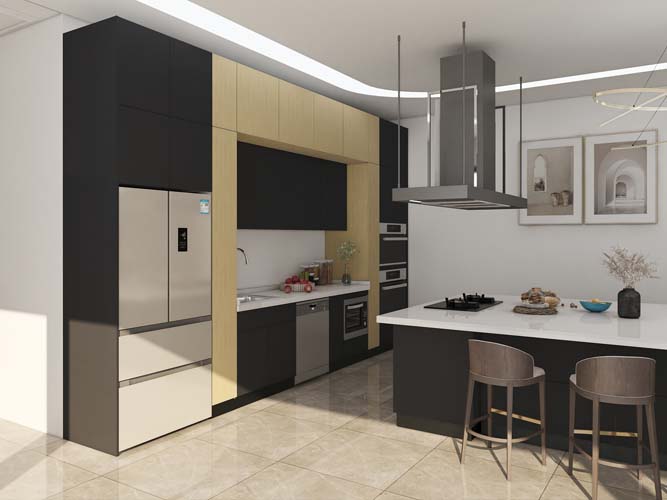
Modern White Melamine Wooden Kitchen Cabinet Design
Advantages of Frameless Cabinets:
More Storage Space: Frameless cabinets have a larger storage capacity than framed cabinets because there is no frame taking up space. The absence of the frame also allows for easier access to the contents of the cabinet.
Sleek Design: The frameless design gives a sleek and modern look to the kitchen. This is because the cabinet doors and drawers can be flush with the cabinet's sides, providing a clean and contemporary look.
Easy to Clean: Frameless cabinets are easy to clean because there is no frame to trap dust and dirt. With a smooth surface on all sides, cleaning the cabinets is a breeze.
Customization: Frameless cabinets can be customized to fit any space or style. The absence of a frame allows for more flexibility in cabinet design, so homeowners can choose from a wider range of colors, finishes, and styles.
Disadvantages of Frameless Cabinets:
Limited Structural Support: Frameless cabinets rely on thicker side panels and backs for support, which can limit their structural integrity. If the cabinets are not installed properly or if they are overloaded, they can sag or warp over time.
Higher Cost: Frameless cabinets can be more expensive than traditional framed cabinets. This is because the manufacturing process for frameless cabinets is more complex and requires more precise construction.
Installation Difficulty: Installing frameless cabinets can be more difficult than installing framed cabinets. This is because the cabinets must be perfectly level and plumb, and any mistakes in the installation can cause problems later on.
Fewer Options for Hinges and Hardware: Because frameless cabinets don't have a frame, there are fewer options for hinges and hardware. This can limit the style and functionality of the cabinets, especially if homeowners have specific requirements for their kitchen design.
Framed Cabinet
Framed cabinets have a front frame around the cabinet box that the doors and drawers attach to. This type of cabinet is more traditional and offers a classic look. The frame provides added stability and support to the cabinet box, which can be especially important for heavy countertops. Framed cabinets also offer more variety in terms of door styles and finishes.
|
Advantages of Framed Cabinets |
Disadvantages of Framed Cabinets |
|---|---|
| Strength and Durability | Less Storage Space |
| Aesthetic Appeal | Difficult to Clean |
| Easier Installation | Limited Design Flexibility |
| More Affordable | Heavier |
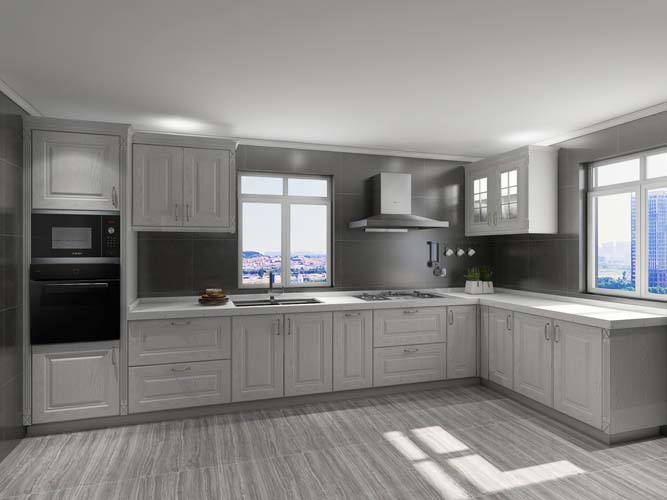
Custom Mad Shaker Handle Kitchen Cabinets Furniture with Sink
Advantages of Framed Cabinets:
Strength and Durability: Framed cabinets are known for their strength and durability. The frame provides extra support to the cabinet box, making it less likely to sag or warp over time.
Aesthetic Appeal: Framed cabinets are available in a wide variety of styles, making them easy to integrate into any kitchen design. The frame also adds a decorative element to the cabinet, giving it a more traditional and classic appearance.
Easier Installation: Framed cabinets are typically easier to install compared to frameless cabinets. The frame acts as a guide for installation, making it easier for contractors to ensure that the cabinets are level and plumb.
More Affordable: Framed cabinets are often more affordable than frameless cabinets because they require less material and are easier to manufacture.
Disadvantages of Framed Cabinets:
Less Storage Space: Because of the frame, framed cabinets have less storage space than frameless cabinets. The frame takes up valuable space that could be used for storage, making it less suitable for larger kitchens.
Difficult to Clean: The frame creates crevices and corners where dirt and grime can accumulate, making it more difficult to clean compared to frameless cabinets. Cleaning the frame requires more effort and time.
Limited Design Flexibility: Framed cabinets come in a limited range of sizes, which may not be suitable for all kitchen layouts. This means that homeowners may need to compromise on their design to accommodate the cabinet sizes available.
Heavier: The frame adds extra weight to the cabinets, making them heavier and more difficult to move around. This can be a challenge during installation and may require additional manpower.
The decision between frameless and framed cabinets comes down to personal preference and the style of the space. If you prefer a modern, sleek look, frameless cabinets may be the best choice for you. However, if you prefer a more traditional style, framed cabinets may be a better fit. It is also important to consider the weight of the countertop, as framed cabinets offer more support for heavy materials.
Cabinet FAQs
1. What color cabinets go with gray walls?
White, off-white, light gray, dark gray, navy blue, or black cabinets all look great with gray walls.
Other options include wood cabinets in shades of brown, such as honey, espresso, or walnut. To add a bit of contrast, you could also choose a bold color, like navy blue or forest green.
2. What color tile goes with cherry cabinets?
For a classic look, a white or light gray tile would work best with cherry cabinets. For a more modern look, a dark gray, black, or navy tile would pair nicely.

